Small Lightly wooded area cleared to grass. Till or no till?
Cinnamonstick 11
3 years ago
last modified: 3 years ago
Featured Answer
Sort by:Oldest
Comments (13)
morpheuspa (6B/7A, E. PA)
3 years agolast modified: 3 years agoCinnamonstick 11 thanked morpheuspa (6B/7A, E. PA)Cinnamonstick 11
3 years agolast modified: 3 years agoRelated Discussions
Tilling/Slit Seeding - Starting from Scratch
Comments (3)if you till it, you will have to till it so many times you will wish you never started. what happens is the tilled dirt settles unevenly and leaves it real bumpy. you can roll it after tilling to compact it back down, but then that defeats the purpose! how big an area you talking about here? if it is a few hundred up to maybe 10,000 sq ft i would till it and work in soil amendments at the same time. (i know, i just said tilling is bad but this is what I would do) bigger than that i just cut down the existing dead stuff as low as i could and overseed....See MoreTilling vs non-tilling
Comments (53)We have a 20' x 24' hoophouse (two layers of plastic) on decent clay soil. I am having some issues figuring out how to loosen the deeper layers of soil for planting, and how to do the final soil preparation for planting with a multi-row seeder. The first summer we did succession-plantings of buckwheat to loosen the soil and discourage the perennial weed grasses. Last summer the house grew tomatoes, herbs, peppers, chard, and brassicas. This year I would really like to implement mechanical seeding, but that requires extra care in soil preparation. I am mostly trying to follow Eliot Coleman's books on hoophouse growing--I also have the book "Teaming with Microbes" but am having some challenge figuring out how to marry up the concepts and applied them inside a structure where it never rains. Regarding loosening the deeper layers of soil, I tried using a broadfork, but cannot penetrate more than the top two inches of the soil due to mild compaction. A mattock breaks up the soil with some effort, or a Mantis tiller breaks it up well, but I'm not sure which approach is preferable. I also have not figured out how I want to water the whole hoophouse. I'd prefer not to spray water all over the wood structure, but would like to get good coverage. As a result, right now plants are spot-watered, which means that areas that are unplanted (and even areas near the plants) get very dry. So all the natural tillers (earthworms and microorganisms) have moved on. I'm thinking perhaps that maintaining a moister environment would help with the "tilling" of the deeper layers? For seedbed prep, Coleman stated that they loosen the deeper layers with a broadfork (isn't working for me), then "till" in amendments with a "Tilther," a tilling device that they had assembled using the motor of an electric drill that only tills the top 2" or so. Finished compost (presumably finely-screened) is applied over that, and the area is raked to a fine tilth, and then rolled prior to seeding. Sorry about this rambling message, but what would you suggest for: (1) loosening the deeper layers of the clayey soil to prepare for the planting? (tiller, spading, mattock, worms, green covers, or don't do it?) (2) watering system to encourage earthworms and organisms to colonize and keep the water where it needs to be? Also, is city water ok, or well water preferred?...See MoreTo till or not till, that's the question
Comments (29)Ya, but it's more fun! I guess that my main arguement about that would be that first- composting is aimed at decomposition of OM. Cultivating fungi in the soil is aimed at a variety of other goals which do include use of nutrient in OM, but also include water retention (for the sake of water retention rather than continuing decomp alone), mining minerals from incorporated soil (a much different process than decomp of OM), establishment of symbiotic relationship with plants, and a number of other things that we're still just discovering. While I agree that tilling is not a "nuclear option" that ultimately destroys all fungi never to be seen again, I also think that tilling is not exactly conducive to establishing the myc fungi necessary. An example- I have clover and other more interesting legumes growing in my yard. The myc fungi have formed strong associations with the roots of these plants. This makes these fungi stronger and dominant. Tilling in certain other OM, as well as the clover etc. would create an opportunity for bacterial domination as well as for other fungi to get a foothold. I like MY myc fungi. Bacteria and fungi are thought to impact the pH level of the soil very differently. Not only do I want to manage a fungal dominant soil, but I have specific fungal species that took years to really flourish....See MoreTo Till...or not to Till
Comments (20)I think we've visited this subject before. Utilizing raised beds will accomodate planting in soils with poor drainage, but that is far from being the "primary" reason folks plant in raised beds. Probably the biggest reason people garden in raised beds is increased productivity - one is able to double crop yields in a raised bed garden. But there lots of other reasons why these are so popular and it has nothing to do with drainage: * The growing season is extended - the soil in raised beds warms up faster in spring and retains that warmth longer in fall, increasing the harvest period. * Raised beds are easier to maintain. Intensive planting allows for less weed development and what weeds there are are easier to reach and remove. Since you don't walk on raised beds there is no chance of soil compaction, which destroys soil structure and reduces yields. * Raised beds allow for less water usage than open cropping, a huge benefit for those that garden under drought conditions or summer water restrictions. *Raised beds are a huge boon for aging gardeners or those with physical impairments that prevent bending, kneeling or heavy digging. And since raised beds are typically accessible from both sides, they are able to be tended with very lightweight handtools. * Raised beds offer the opportunity to control plantings - either by restraining overly aggressive spreaders or by placing plants beyond the reach of pests like rabbits (very easily fenced off). * Since the soil in raised beds is imported, one is more able to adjust soil for specific growing conditions than you can in open plantings. They are ideal for growing acid loving plants in areas with more base or alkaline soils, as pH in raised beds is more easily adjusted and less buffered. * In addition to offsetting the drainage issues involved with heavy or clay soils or low areas where water may accumulate, raised beds allow the possibility of planting in other less-than-ideal conditions, like where there is a preponderance of tree roots or the soil is extremely rocky or sandy. Posting a very narrow and very personal view on the reasons for utilizing raised beds is of no benefit to anyone on these forums. We all need to a bit more openminded and receptive to possibilities beyond our own narrow frame of reference....See MoreCinnamonstick 11
3 years agomorpheuspa (6B/7A, E. PA)
3 years agoCinnamonstick 11
3 years agoCinnamonstick 11
3 years agoRedSun (Zone 6, NJ)
3 years agonicholsworth Z6 Indianapolis
3 years agoCinnamonstick 11
last yearkrnuttle
last yearlast modified: last year
Related Stories

KITCHEN DESIGNKitchen of the Week: White, Wood and Wide Open
A Pennsylvania couple and their designer take down walls to create an open, light-filled great room
Full Story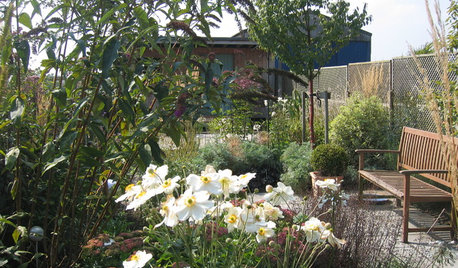
INSPIRING GARDENSA Small Backyard Haven With Secluded Seating
The journey through this English garden reveals a new view at every turn, from tall trees to grasses and a pretty pond
Full Story
DECLUTTERINGDecorate with Intention: Clutter Clearing 101
Fearlessly face disorganized areas to find the home of your dreams
Full Story
COLORGo for the Bold: 6 Small Ways to Use Big Color
These 12 spaces celebrate vibrant color in everything from feature walls to furniture without going garish
Full Story
Woven Wood Shades Tie Rooms Together
Contrasting sharp modern edges or complementing a contemporary look, these window shades are a lovely finishing touch for any room
Full Story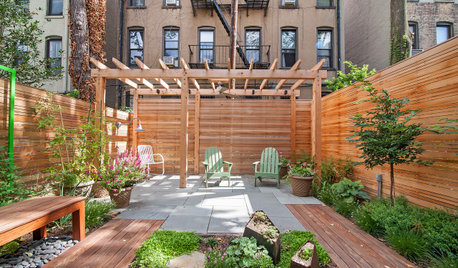
LANDSCAPE DESIGNPatio of the Week: Wood, Stone and Cor-Ten Revive a Brooklyn Yard
A once-neglected New York backyard becomes a beautiful garden, complete with a grill, a terrace and a shaded lounge
Full Story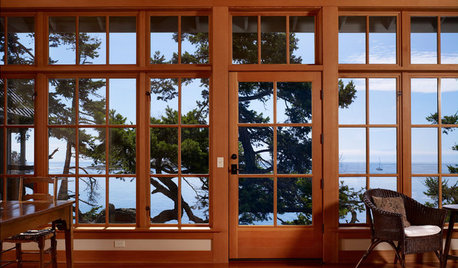
LIGHTINGHouse Hunting? Look Carefully at the Light
Consider windows, skylights and the sun in any potential home, lest you end up facing down the dark
Full Story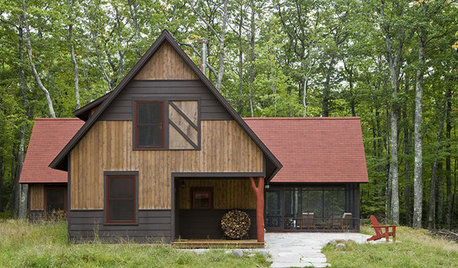
ARCHITECTUREDreaming Of: A House in the Woods
Designs for living among trees — in a real forest or where you live now
Full Story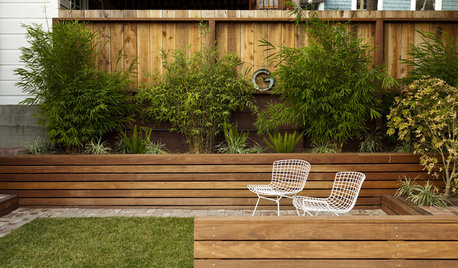
LANDSCAPE DESIGNSmall Garden? You Can Still Do Bamboo
Forget luck. Having bamboo that thrives on a wee plot just takes planning, picking the right variety, and keeping runners in check
Full Story
DECORATING GUIDESTry Slatted Wood Walls to Define Spaces and Add Privacy
Use these stylish, beautiful structures to define a hallway, replace a banister or hide a room
Full StorySponsored
Central Ohio's Trusted Home Remodeler Specializing in Kitchens & Baths








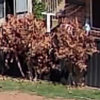
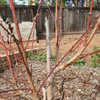

morpheuspa (6B/7A, E. PA)